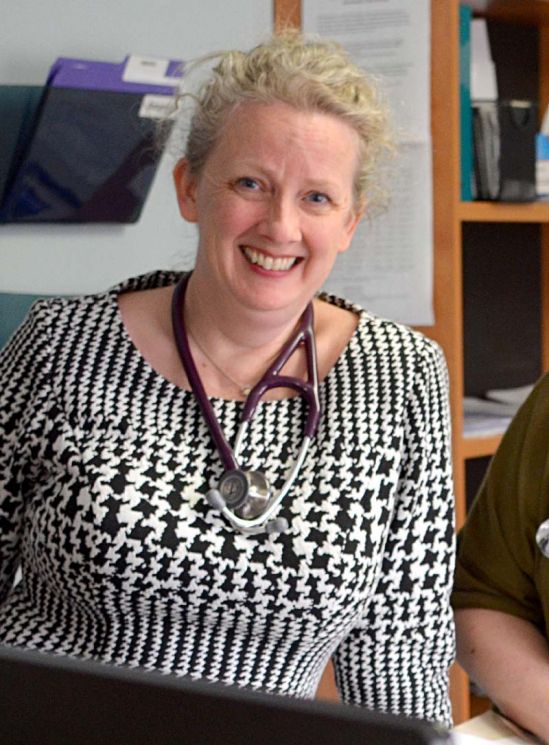Sabra Gibbens | Aug 07, 2019
Dear Frontenac News and readers,
Please allow me to respond to the July 24th editorial “One take on the shortage of primary care physicians” by Dr. Emma Cronk. Being a rural family physician myself, I applaud Dr. Cronk’s achievements, concern for her community, and desire to serve the health care needs of her rural community. I am concerned, however, that her years south of the border have led to a careless disregard for facts and a tendency to blame foreigners for our complicated domestic issues.
Dr. Cronk’s letter might lead people to believe that students from Saudi Arabia and other countries are taking up spots in medical schools and/or family medicine programs that would otherwise go to Canadians, but the data simply do not support that. I consulted the publicly available 2018 Canadian Medical Education Statistics produced by The Association of Faculties of Medicine of Canada to gather information on how many international students are attending Canadian medical schools at the undergraduate level and the post-graduate residency program or fellowship level. The document is 161 pages long, but I’ll share a few interesting facts I discovered.
First, let me address the undergraduate (= medical school) situation. Of the 2,872 new medical students throughout Canada in 2018, only 9 of those students (=0.3%) were not Canadian citizens or permanent residents. Three of those students came from the USA, and six came from elsewhere. Those spots were not “held” for foreign students … they competed for them. Of the 13,635 Canadian students (citizens and permanent residents) who applied for spots in a Canadian medical school in 2018, 19% were admitted. Only 3.4% of the 294 foreign students who applied for spots in Canadian medical schools were admitted. Of all the foreign students currently attending a medical school in Canada as an undergraduate (i.e. as a medical student) there is only one single student from Saudi Arabia here on a student visa. The country most represented in terms of foreign students attending Canadian medical schools on student visas is actually France, with a total of nine students.
Second, let me address the issue of foreign students and international medical graduates (IMGs) at the post-graduate or residency level. It is certainly true that some residency programs reserve spots for IMGs. Among the 1,466 trainees who began a family medicine residency program in 2017, 238 (16.2%) had earned their medical degree outside Canada, just as Dr. Cronk did. It is important to note that 49% of all post-graduate trainees in residency programs or fellowships are actually Canadian citizens or permanent residents who earned their medical degree outside of Canada, and are now returning to complete their training and hopefully practice in Canada. Looking at family medicine programs in particular, only 18 of the 3,514 family medicine trainees (0.5%) in 2018 were not a Canadian citizen or permanent resident.
The IMGs I trained with in the Queen’s University Family Medicine program were all Canadians, or married to a Canadian, and all planning to practice in Canada. Moreover, acceptance into the family medicine residency program as an IMG is conditional upon signing a “Return of Service” commitment, in which the IMG resident promises to practice in an Ontario for at least five years after completion of their training. They do not take their training and run back to some other country to practice.
Yes, in 2017 there were 1,561 doctors from other countries who came to Canada on student visas for post-graduate training, but they come here to train in specialties such as thoracic surgery (62.5% of trainees), neonatology (56.3%), pediatric general surgery (50%), cardiac surgery (48.6%), and critical care / ICU (45.2%) – not family medicine (0.5%). Yes, in some cases the medical schools receive money from other countries to fund the specialty training of international students. These international funds help to subsidize the cost of training for Canadian students. How is that a bad thing? I think it’s great!
Looking at the actual numbers of international students in medical schools and these various residency training programs, I fail to see how this practice of training international students contributes to the shortage of family doctors in rural areas. I could go on for another few pages about numerous other factors that do contribute to the shortage of family doctors in rural areas, but I will not. I just hope that I have to some extent dispelled the notion that international students are to blame.
To Dr. Cronk, I share your frustrations about our shortage of rural family doctors, and I appreciate how much it pains you that you are not able to step in and fill that need for your community. It is indeed a tragedy that Dr. Cronk is currently unable to live and serve in our area. Perhaps Dr. Cronk’s experience could inform future policy to prioritize excellent candidates who have their heart set on rural family practice.
Sincerely,
Sabra Gibbens MD, CCFP
Family Physician in Verona
More Stories
- Dry Conditions Spark Fires in Fields and Forests
- 143rd Maberly Fair
- Local Seniors Medal at OSGA 55+ Provincial Games
- Seventh Town Serenades Sharbot Lake
- Brass Point Bridge Closure Leaves Commuters Behind
- Wild Art Walk Call For Submissions
- Three Dwelling Limit Coming For Lots in North Frontenac
- Wildfire in the 1000 block of Rutledge Road - Township Says Fire Now "Under Control"
- Verona and Sydenham Ballpayers Win National Championship With Kingston Colts
- Sweet Music and Some hard Truths At Blue Skies MusicFestival

